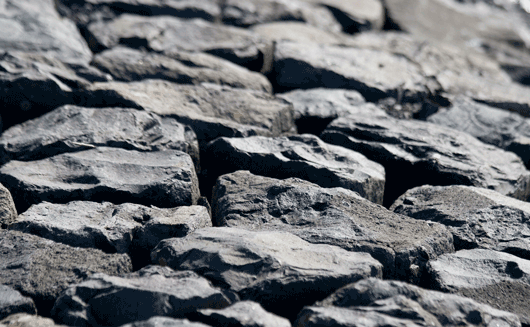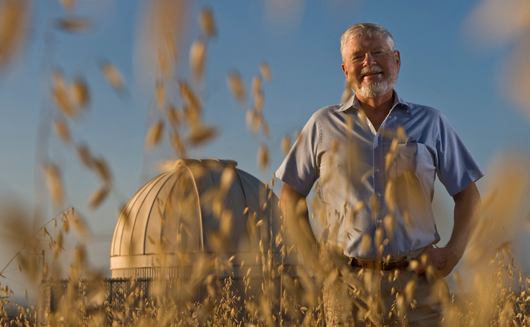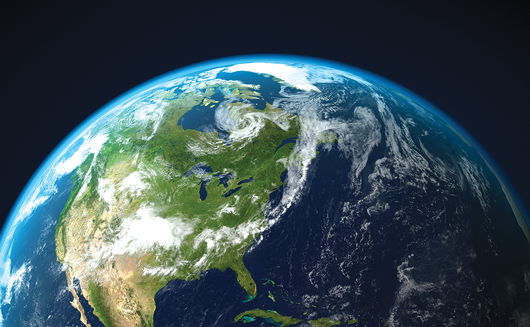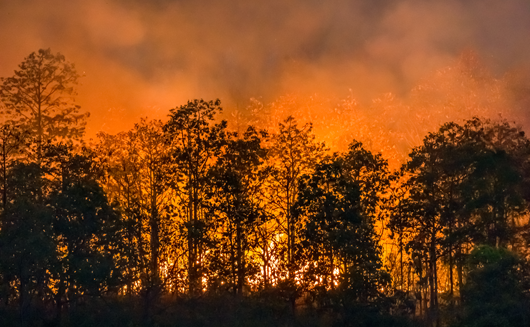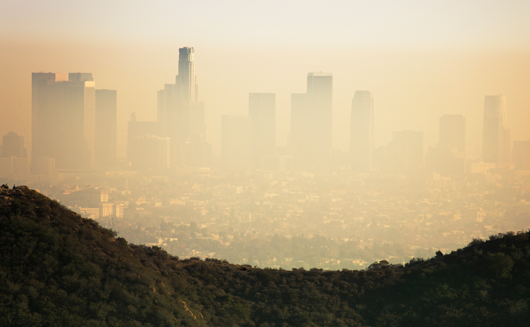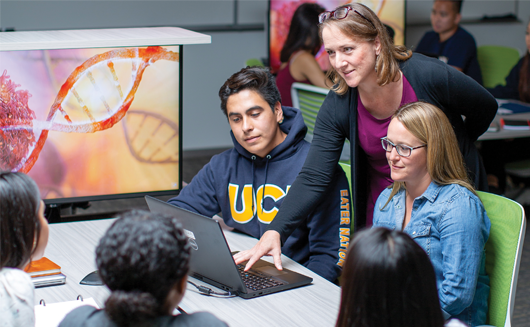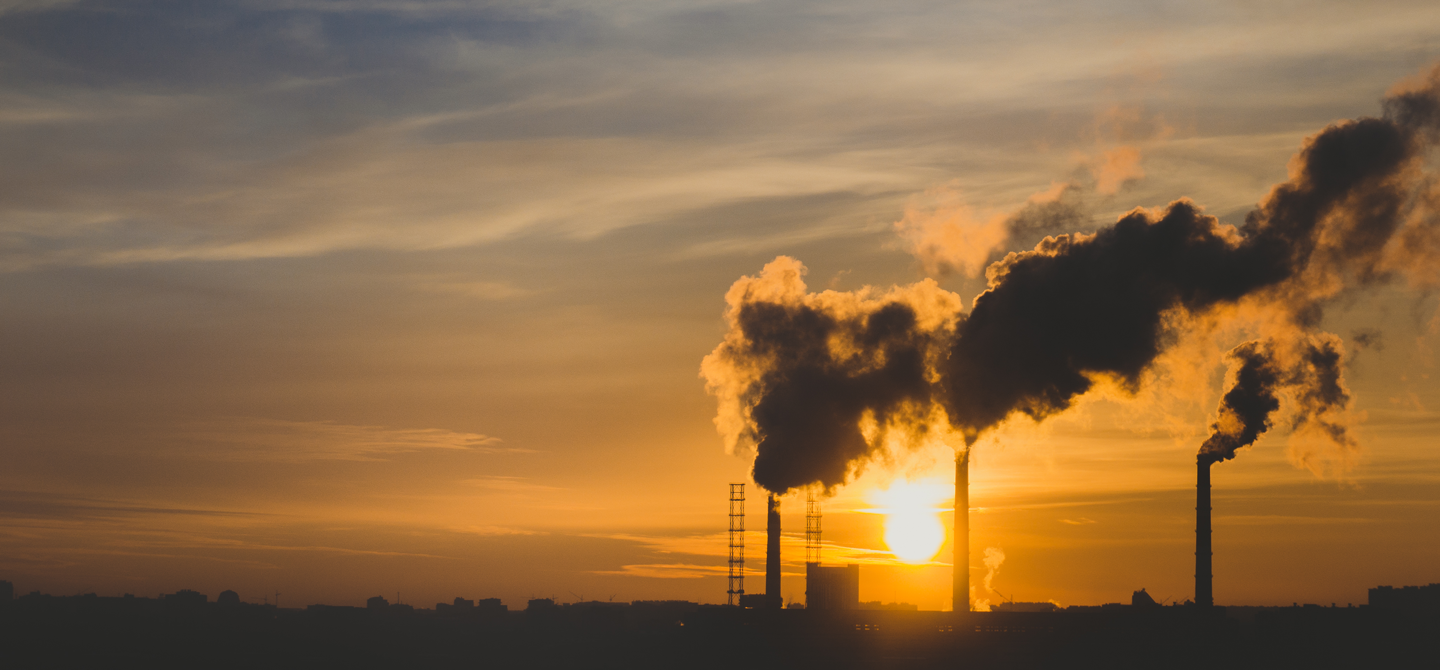
Carbon capture and air quality
It’s like trying to find a specific kind of needle in a haystack. Chancellor’s Professor Jenny Yang and her lab students in the UCI Department of Chemistry are researching ways of plucking planet-warming carbon dioxide gas straight out of the air by working to synthesize molecules that can react with CO2 and, in the process, remove it from the atmosphere. It can then be sequestered or used to make non-planet-warming products.

CO2 only exists in trace amounts in the atmosphere relative to other gases such as nitrogen and oxygen. “We’re trying to find the right molecule that can bind to CO2 again and again in the presence of oxygen and water,” says Yang, who’s one of the UCI professors affiliated with the Solutions that Scale program that aims to determine globally applicable solutions to climate change and environmental degradation. “And we want something that’s cheap and scalable.”
Furthermore, they need a solution that can transfer to such environments as industrial operations, a solution that stakeholders can readily access. “We’re looking at molecules that are already produced as commodity chemicals or can easily be synthesized cheaply at a large scale,” Yang says.
Allie Zito is among the grad students in her lab at Frederick Reines Hall using electrochemical techniques to synthesize and test carbon-capturing molecules. One aim, she says, is to create a molecule that can remove CO2 from the fumes emitted by flues in places such as gas power plants. Emissions from flues, according to the Environmental Protection Agency, account for roughly 25 percent of all CO2 emissions in the U.S.
And Zito has plans for that captured carbon dioxide. She’s trying to make a CO2 supply, or feedstock, for use in new materials and chemicals.
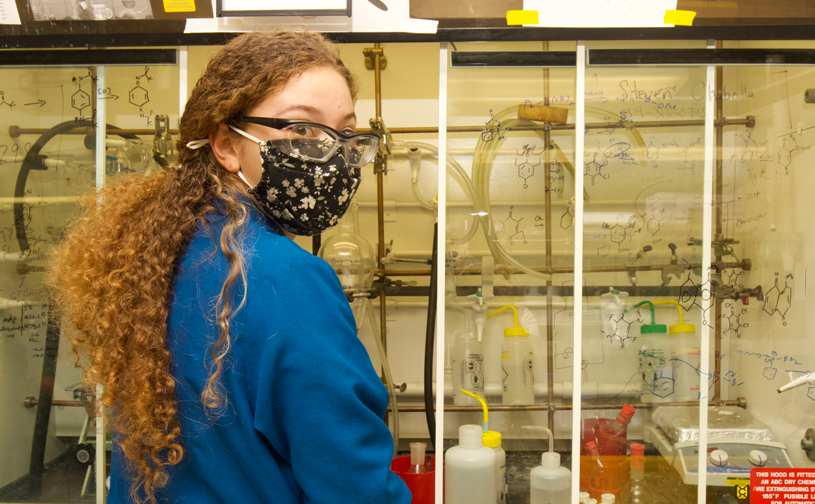
One challenge for the Ph.D. student, who’s collaborating with theoretical chemists from UCLA and engineers at Massachusetts Institute of Technology, who will take the captured carbon and figure out ways of distributing it in the economy, is to synthesize a molecule that will capture CO2 while in the presence of oxygen and water. These two mainstays of the atmosphere tend to react relatively easily with other chemicals and could disrupt the carbon capturing by reacting with Zito’s synthesized molecule before it has a chance to react with CO2.
The lab of Barbara Finlayson-Pitts in the Department of Chemistry and AirUCI program is also focused on the atmosphere but with a different lens: It’s working to understand how air quality is evolving and will continue to evolve as climate change unfolds – and as societies begin to shift away from fossil fuels.
One of its projects is centered on sulfur-containing pollutants that contribute to smog in Southern California – indeed, throughout the world – with accompanying air quality-related health and climate impacts. One of the pollutants, sulfur dioxide, forms during the combustion of some fossil fuels. It’s also produced via the atmospheric oxidation of organosulfur compounds generated by biological processes in coastal and some agricultural areas.
In a Proceedings of the National Academy of Sciences paper, a team led by the Finlayson-Pitts lab describes how in coastal regions such as Southern California, sulfur dioxide concentrations in the atmosphere stand to decline as fossil fuel emissions decrease – but not as much as might initially be expected because, the researchers found, the molecule will still be forming from the biological sources.
“In addition, these non-fossil fuel sources generate a second sulfur compound that efficiently forms particles in air when it combines with compounds that are ubiquitous in air from a variety of sources, including human breath, agricultural processes and some carbon dioxide capture approaches,” Finlayson-Pitts says. “This research illustrates the importance of understanding both anthropogenic and natural sources of different atmospheric chemical species and how they interact in complex ways to influence air quality and climate.”
– Lucas Van Wyk Joel
